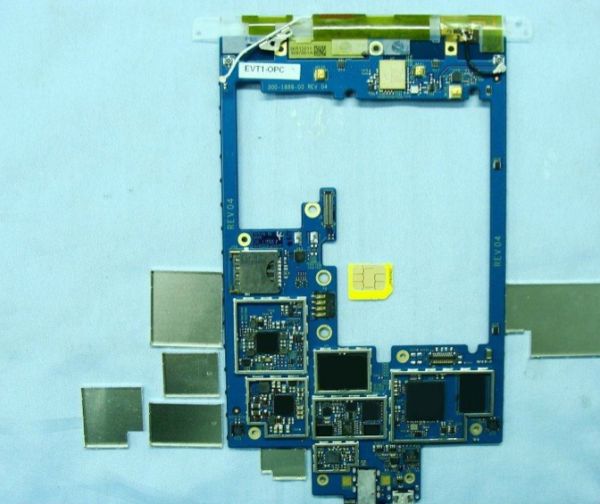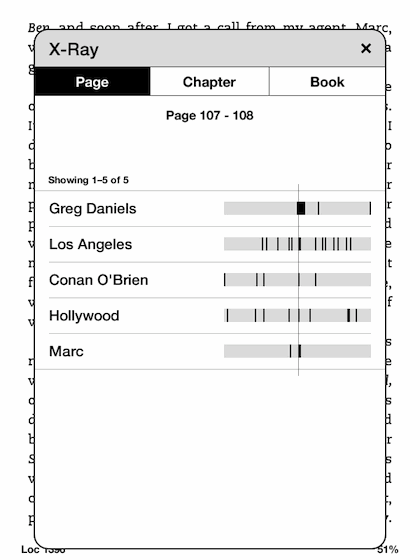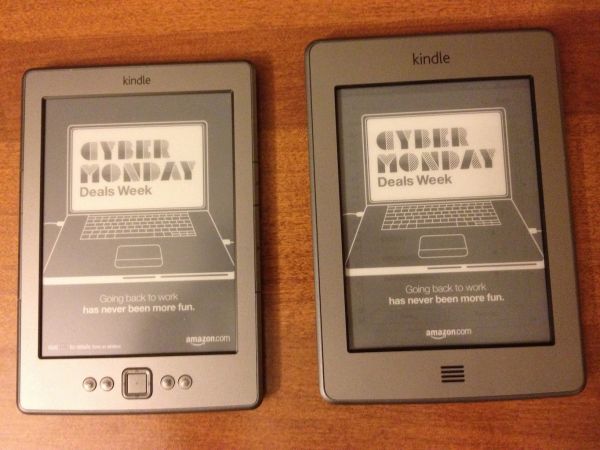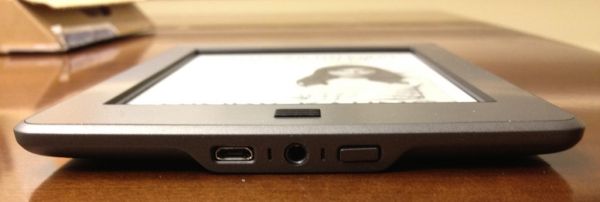Amazon Kindle Touch 3G Review
by Andrew Cunningham on November 28, 2011 11:00 PM EST- Posted in
- Amazon
- ereaders
- Kindle
- Kindle Touch
Amazon announced three new Kindles back in September: the fourth generation Kindle, the Kindle Touch (and Kindle Touch 3G, both of which are identical aside from the 3G antenna), and the Kindle Fire. The Kindle 4 was available on the same day, and we've already taken a good look at it. Our Kindle Fire review is forthcoming. That leaves the Kindle Touch, which we're going to talk about today.
The Kindle Touch is Amazon's first touchscreen e-reader - past Kindles have used nothing but buttons for navigation, even as competing products like Barnes & Noble's Nook Simple Touch began to incorporate touchscreens. At $99 and $149 for the wi-fi and 3G versions ($139 and $189 for the ad-free Kindles), the Kindle Touch is priced competitively, but how does the touchscreen actually impact your reading experience?
Before we get started: Many things we covered in our review of the non-touch Kindle (hereafter referred to as the Kindle 4, to avoid confusion), including screen quality, page refreshes, supported file formats, software updates, and general usage, are still applicable here. If you haven’t read it yet, you should look at our Kindle 4 review before continuing.
Hardware and Software
The Kindle Touch’s box is nearly identical to the Kindle 4's: an unadorned cardboard box containing just the Kindle, a micro USB cable, and a small cardboard insert with basic directions for powering on and charging the device. The manual proper, which has more detailed directions for using the Kindle’s touch controls and other features, is stored on the Kindle itself, and will be launched automatically at first startup.

The first thing you notice when comparing the Kindle Touch to the Kindle 4 is the lack of buttons, of which the Kindle Touch has just two: the Home button situated on the front of the device, which looks vaguely like a speaker grill, and the power/sleep button located on the bottom of the Kindle next to the charge light and headphone jack. Two speaker grills on the back provide basic stereo sound.
The Kindle Touch uses the same 800x600 E-Ink Pearl screen as the Kindle 3 and the Kindle 4 - contrast on my review unit was identical to the less expensive unit. At 6.8” (172mm) x 4.7” (120mm) x 0.40” (10.1mm) and 7.5 ounces (7.8 for the 3G version), the Kindle Touch is still smaller and lighter than the Kindle 3 (7.5" x 4.8" x 0.34" and 8.5 ounces), but is just a bit larger and heavier than the Kindle 4 (6.5" x 4.5" x 0.34" and 5.98 ounces) - the difference is noticeable, especially when the two devices are side by side, but it in no way impacts the reader’s ability to hold the Kindle comfortably in one hand for extended periods of time.
The Kindle Touch’s increased weight is partly due to the larger battery, which at 1420mAh (3.7v) is capable of up to two months of use with the wireless turned off (compared to one month for the Kindle 4).

FCC Internal Photos - Note a microSIM, similar packages and arrangement to the Kindle 4
Micro USB, headphones, and sleep button
Unlike the 3G connectivity of Kindles past, the Kindle Touch 3G’s connection won’t give you free and unfettered access to the Internet. Here, it’s used solely for WhisperSync, for browsing the Kindle Store, downloading purchases, or for looking at Wikipedia - no other sites are available without a wi-fi connection. This move is probably a good business decision on Amazon’s part (and, given the uneven nature of the Kindle’s still-experimental web browser, probably not a terribly disruptive one), but if web surfing is something you do with your current Kindle 3G, prepare to make some adjustments before upgrading to this model.
The Kindle Touch uses version 5.0 of the Kindle software (compared to 4.0 in the non-touch Kindle) - the layout and operation are mostly the same, but the implementation of the touch keyboard and controls and the new X-ray feature were apparently enough to merit the bump in numbering.













31 Comments
View All Comments
Andrew.a.cunningham - Tuesday, November 29, 2011 - link
Correct. I mentioned it in the article. :-)mmaestro - Wednesday, November 30, 2011 - link
I use Instapaper, which is great for articles which are straight up text (although the Kindle Touch misfiles them as books and won't give you an index page) but strips all the images. Calibre will pull the Anandtech rss feed and include images, and I've used that for a few articles (benchmarks are no good without graphs). It's kind of a hassle to get set up and working, but worth it for some of the longer articles if you're tired of staring at a screen.You can also get Amazon to convert pdfs and other files into their format by emailing to your Kindle with "CONVERT" in the subject line. The results are pretty variable, but it can be useful.
BrightCandle - Tuesday, November 29, 2011 - link
When Sony released their PR range of E-readers the touchscreen version was less readable due to the touch screen layer. It had, all be it slight, fuzziness that was not present on the cheaper but much sharper button based one. The fact that Amazon has integrated a touch screen without any impact on reading quality is quite impressive, a feat Sony failed to do.KoolAidMan1 - Tuesday, November 29, 2011 - link
This is what kept me from jumping into a touch screen Kindle. The Sony touch models really didn't look good at all. I still don't think it's worth going from a Kindle 3 to, but it's slightly more tempting knowing that it at least looks comparable.kabelmk - Tuesday, November 29, 2011 - link
Well, that is not true. I have PRS-950 and is using the same " infrared touch" technology that Kindle is using now. So, Kindle is kind of year and half behind ... PRS-900 had a touch layer, which was introduced like a two and half years ago ...Wizzdo - Tuesday, November 29, 2011 - link
This is deprecated news. The Sony readers of the last year or so have used the same technology that the Kindle Touch is now using. The Sony readers are great and I think the Nook Touch which has been out for a while now is a better reader than Kindle's Touch offering for a few reasons including being cheaper (ad free version).aggie11 - Tuesday, November 29, 2011 - link
Maybe I missed something, it's entirely possible this is in another review, but where is the comparison to the nook touch I've been looking for? Personally I think I like the nook version better, but I was hopping to get a valid sound opinion (something I can trust anandtech for) on the newest kindle competitors and how they stack up to be sure.EyelessBlond - Tuesday, November 29, 2011 - link
That was exactly what I was looking for, and was excited when I heard mention of the Nook Touch in the summary. But there's nothing: no comparisons of the e-ink screens, the UI, etc.What I really would like to see is a comparison of the different e-readers, especially the ease with which they can be hacked to do more tablet-y things, and whether that's even a worthwhile endeavor.
Andrew.a.cunningham - Tuesday, November 29, 2011 - link
Unfortunately I haven't gotten any Nook units here for review yet, but I'll talk to Anand about trying to get one. If I do, I'll definitely do a follow-up piece.teiglin - Tuesday, November 29, 2011 - link
I'd love to see a Nook Touch comparison. I'm not likely to dump my Kindle 3 any time soon, but if something happens to it, I'd either be getting a Nook Touch or a Kindle 4; the lack of hardware page turn buttons is a deal-breaker for me on this one.